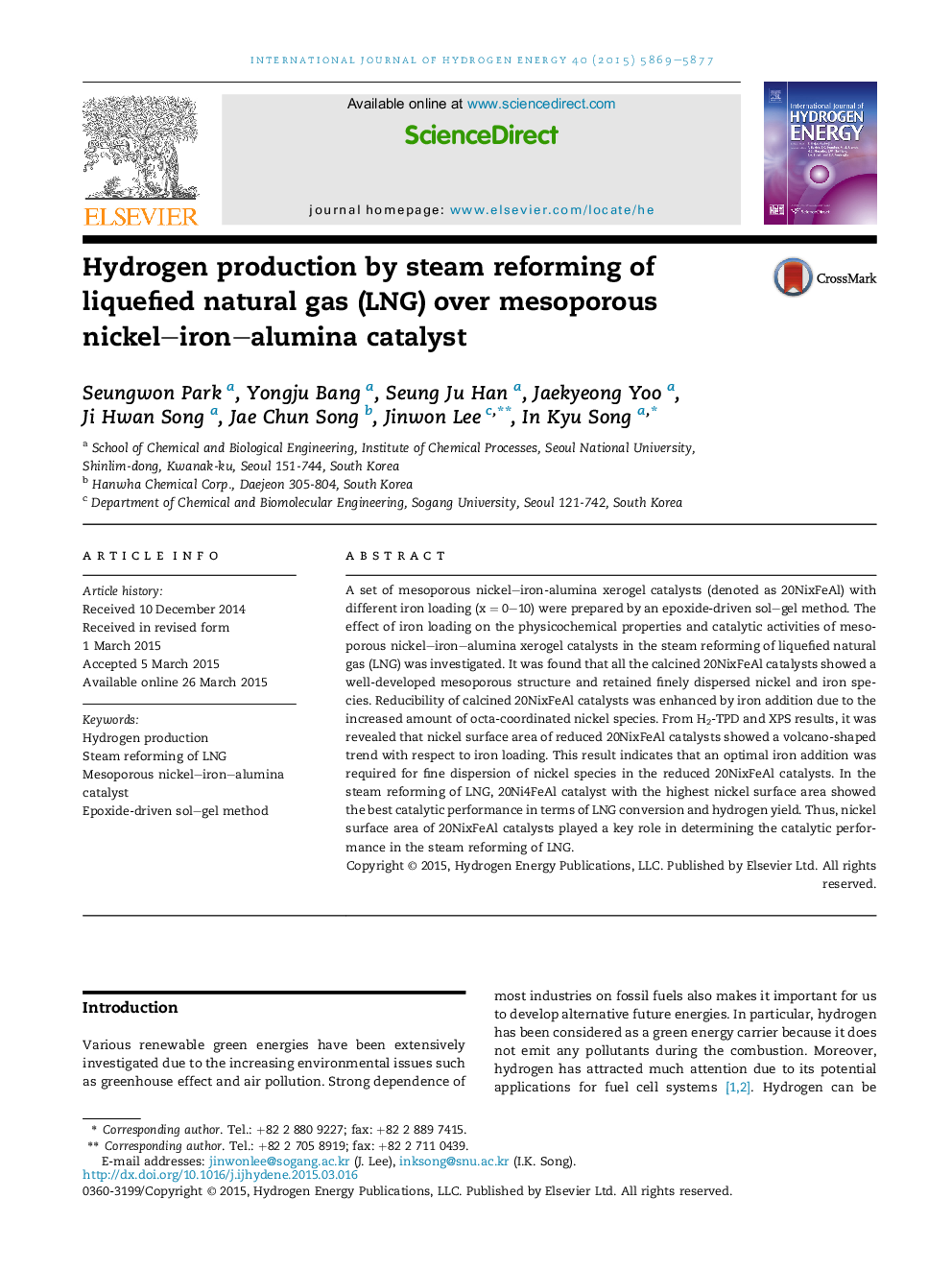| Article ID | Journal | Published Year | Pages | File Type |
|---|---|---|---|---|
| 1275432 | International Journal of Hydrogen Energy | 2015 | 9 Pages |
•Ni–Fe–Al2O3 catalysts (20NixFeAl) with different Fe content (x = 0–10) were prepared.•Hydrogen was produced by steam reforming of liquefied natural gas (LNG).•An optimal Fe content was required for the best catalytic performance over 20NixFeAl.•LNG conversion and hydrogen yield increased with increasing nickel surface area.
A set of mesoporous nickel–iron-alumina xerogel catalysts (denoted as 20NixFeAl) with different iron loading (x = 0–10) were prepared by an epoxide-driven sol–gel method. The effect of iron loading on the physicochemical properties and catalytic activities of mesoporous nickel–iron–alumina xerogel catalysts in the steam reforming of liquefied natural gas (LNG) was investigated. It was found that all the calcined 20NixFeAl catalysts showed a well-developed mesoporous structure and retained finely dispersed nickel and iron species. Reducibility of calcined 20NixFeAl catalysts was enhanced by iron addition due to the increased amount of octa-coordinated nickel species. From H2-TPD and XPS results, it was revealed that nickel surface area of reduced 20NixFeAl catalysts showed a volcano-shaped trend with respect to iron loading. This result indicates that an optimal iron addition was required for fine dispersion of nickel species in the reduced 20NixFeAl catalysts. In the steam reforming of LNG, 20Ni4FeAl catalyst with the highest nickel surface area showed the best catalytic performance in terms of LNG conversion and hydrogen yield. Thus, nickel surface area of 20NixFeAl catalysts played a key role in determining the catalytic performance in the steam reforming of LNG.
Graphical abstractFigure optionsDownload full-size imageDownload as PowerPoint slide
